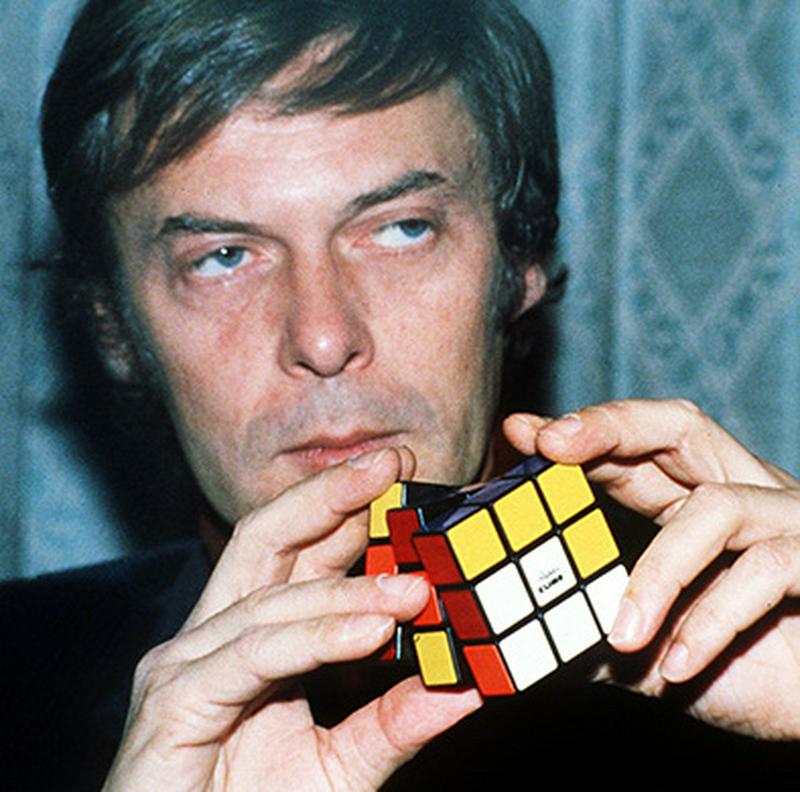The Rubik's Cube, The Mind-Boggling Toy Worth Millions
By | March 7, 2022

Few inventions in the entirety of human history can match the simplicity and popularity of the Rubik’s Cube. Born from the mind of a Hungarian architect aptly named Ernő Rubik in 1974, the most universal puzzle toy ever started as a collection of colored wood and paper fastened by glue, paper clips, and rubber bands.
Rubik conceived of the idea while working as a descriptive geometry teacher. The lesser-known and arcane study uses two-dimensional images to serve as three-dimensional problems. Undoubtedly, Mr. Rubik became the only purveyor of this discipline to earn over $100 million. Here’s the story of the confounding Rubik’s Cube and its 43,252,003,274,489,856,000 different arrangements.

The “Magic Cube”
Born in the shadow of World War II, Rubik never intended to become famous. However, his square brainchild, of which he speaks like it’s one of his actual children, had other ideas. As he wrote in an autobiography, that’s not really about him. “The cube loves attention; I don’t. He is eager to interact with everyone; I sometimes find this a bit difficult. He’s quite ambitious; I am less so.”
He first began tinkering with his intricate moving blocks. As he said, “I don’t know exactly why.” After much trial, error, and some coloring, he realized after a few moves, he would never be able to return the color scheme to its original shape. While that might have given some of us anxiety, it fascinated Rubik. And he wasn’t alone.

More Than A Toy Puzzle
As scientist Douglas Hofstadter wrote of the Rubik’s Cube in 1981, it’s “much more than just a puzzle. It is an ingenious mechanical invention, a pastime, a learning tool, a source of metaphors, an inspiration.” After Rubik introduced what he originally called the “Magic Cube,” in his native country, it promptly sold 300,000 units in just two years.
Convincing the Hungarian government to allow the product out of the country took some finagling. But when the American Ideal Toy Company brought the inventor over for a fair, they probably worried about his salesmanship. After all, Rubik couldn’t speak English very well and was rather shy. Nevertheless, after rebranding it in his name, the company sold over 100 million in just three years.

A Cycle Of Difficulty
As philosopher and Rubik’s Cube historian Steve Patterson wrote, “There’s a sense in which the cube is very, very simple — it’s only got six sides, six colors.” But, “In a very short period of time, it becomes unbelievably complex.” That confounding complexity likely contributed to the decline in the Rubik’s cube.
The New York Times described it as “a bright meteor that burned out.” More than a few people across the country smashed their cubes to bits, vainly hoping that its secrets would be revealed in its contents. For Rubik himself, that was ok, “I’m not the person who loves to be in the spotlight and so on and so forth,” he said. “That kind of success is like a fever, and high fever can be very dangerous. It’s not reality.”

Back With Avengence
Just when people thought they’d never hear from the impossible cube, the ‘90s saw a massive revival. Younger, and perhaps smarter people began setting cube speed records. Everything from solving the cube blindfolded to underwater and everything in between spurred a second life for the Rubik's Cube. Ironically, the inventor himself took weeks to first solve the mind-boggling puzzle, which gave him “a great sense of accomplishment and utter relief.”
Today, the world record of 3.47 seconds is held by Yusheng Du of China. But don’t feel bad, the creator insists that, “The elegant solution, the quality of the solution, is much more important than timing.” And of course, no one else knows it better, “I’m very close to the cube. The cube was growing up next to me and right now, it’s middle-aged, so I know a lot about it.”
